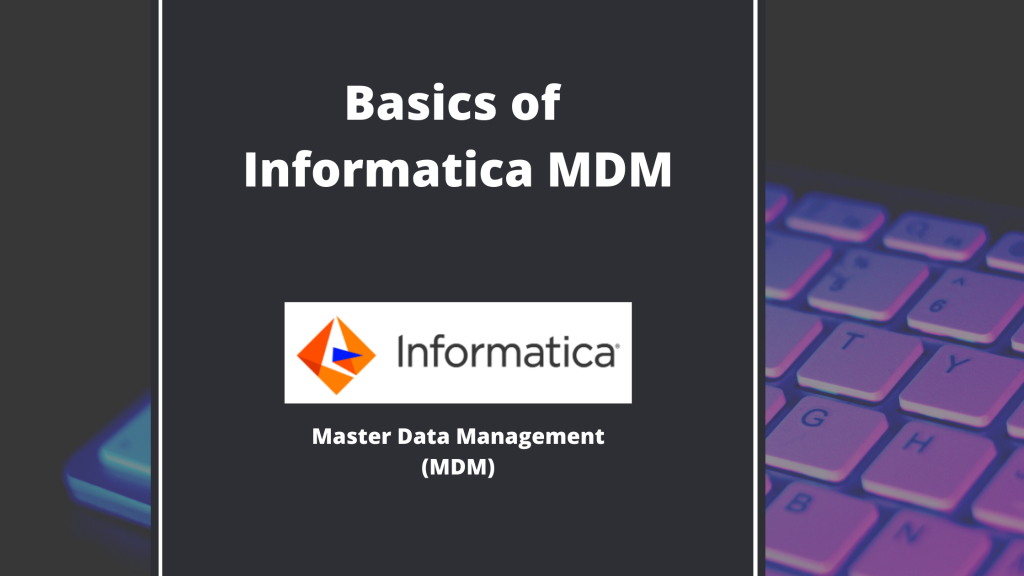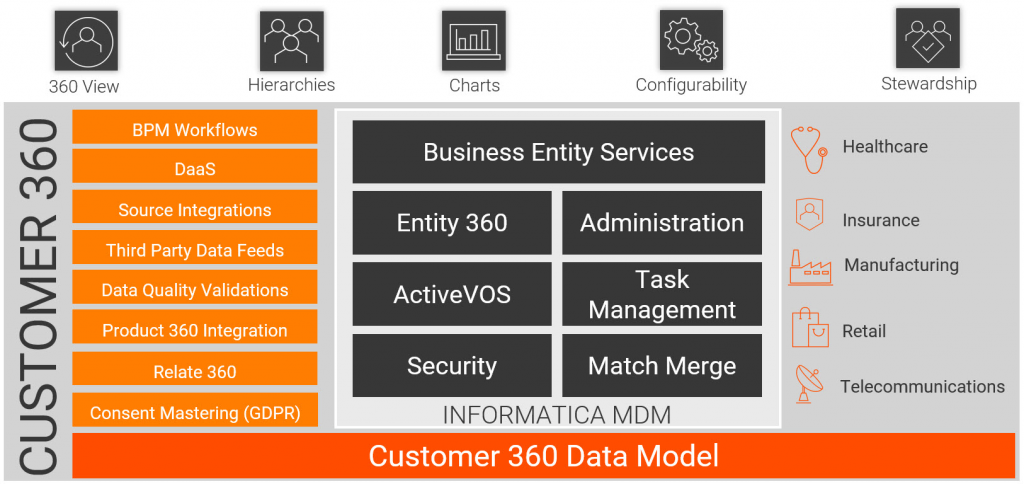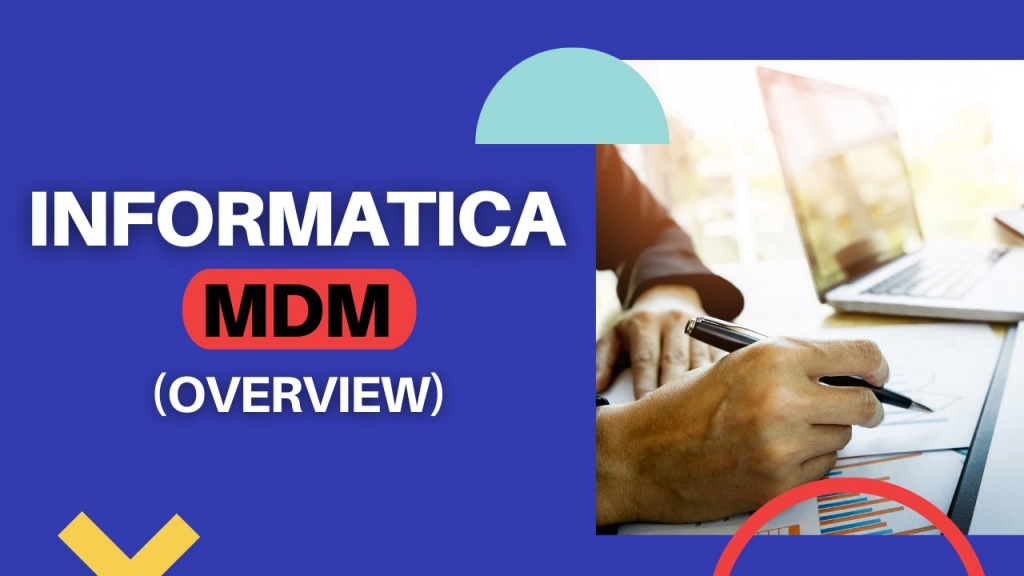What is Informatica MDM?

Informatica MDM is a master data management (MDM) solution that helps organizations manage and govern their critical master data. MDM solutions like Informatica MDM provide a single, trusted view of master data, which can be used to improve data quality, reduce data redundancy, and improve decision-making.
Top 10 use cases of Informatica MDM
Here are the top 10 use cases of Informatica MDM:
- Customer 360: Create a single view of customers across all touchpoints.
- Product 360: Manage product data across the product lifecycle.
- Supplier 360: Centralize supplier data and improve supplier relationships.
- Financial 360: Create a single view of financial data for better decision-making.
- Compliance 360: Ensure compliance with regulations by managing master data centrally.
- Risk management: Improve risk management by having a single view of risk data.
- Fraud detection: Detect and prevent fraud by having a single view of customer data.
- Marketing: Improve marketing campaigns by having a single view of customer data.
- Sales: Improve sales performance by having a single view of customer data.
- Operations: Improve operational efficiency by having a single view of master data.
What are the feature of Informatica MDM?

Informatica MDM has a number of features that make it a powerful MDM solution, including:
- Data integration: Informatica MDM can integrate data from a variety of sources, including disparate systems, legacy systems, and cloud-based systems.
- Data governance: Informatica MDM provides a comprehensive set of data governance features, including data quality, data lineage, and data security.
- Data enrichment: Informatica MDM can enrich master data with additional information from external sources, such as social media and customer surveys.
- Data sharing: Informatica MDM can share master data with other applications and systems, ensuring that everyone in the organization is working with the same data.
- Self-service: Informatica MDM provides a self-service portal that allows users to manage master data without having to rely on IT.
How Informatica MDM works and architecture?

Informatica MDM works by first integrating data from a variety of sources. Once the data is integrated, Informatica MDM applies a set of data governance rules to ensure the quality and accuracy of the data. Next, Informatica MDM enriches the data with additional information from external sources. Finally, Informatica MDM shares the master data with other applications and systems.
The architecture of Informatica MDM is divided into three layers:
- The data layer: This layer contains the master data that is managed by Informatica MDM.
- The application layer: This layer provides the user interface and other functionality for managing master data.
- The infrastructure layer: This layer provides the underlying infrastructure for Informatica MDM, such as servers, storage, and networking.
How to Install Informatica MDM?
The installation of Informatica MDM can be complex, and it is recommended that you consult with Informatica or a certified partner for assistance. However, the basic steps for installing Informatica MDM are as follows:
- Download the Informatica MDM software.
- Install the software on a server.
- Configure the software.
- Import the master data.
- Start using Informatica MDM.
Basic Tutorials of Informatica MDM: Getting Started
Here, I can provide you with a basic outline process involved in getting started with Informatica MDM:

Step-by-Step Basic Tutorial of Informatica MDM:
Step 1: Install and Set Up Informatica Platform:
- Install Informatica PowerCenter, the foundational platform for Informatica MDM.
- Configure the necessary hardware, software, and database components.
- Ensure that you have the required licenses for Informatica MDM.
Step 2: Install and Configure Informatica MDM Hub:
- Install Informatica MDM Hub components, including Hub Server, Hub Store, and Hub Console.
- Configure the MDM Hub properties, database connections, and integration with PowerCenter.
- Set up authentication and security settings for user access.
Step 3: Define Data Models:
- Define the data models that will represent your master data entities (e.g., customer, product) within MDM.
- Customize attributes, relationships, and hierarchies for each data model.
Step 4: Configure Data Integration:
- Configure data integration tasks to extract data from source systems and load it into the MDM Hub.
- Utilize Informatica PowerCenter workflows to transform and cleanse data before loading.
Step 5: Data Profiling and Cleansing:
- Use Informatica Data Quality (IDQ) to profile and assess the quality of incoming data.
- Create data cleansing transformations to standardize, validate, and cleanse data.
Step 6: Data Matching and Merging:
- Configure data matching rules to identify duplicate records within the MDM Hub.
- Set up merge strategies to determine how duplicate records should be merged into golden records.
Step 7: Data Governance and Stewardship:
- Define data stewardship roles and responsibilities.
- Configure workflows for data stewardship tasks such as exception handling, data validation, and approval.
Step 8: Data Access and Consumption:
- Enable access to clean, reliable master data through APIs, web services, or connectors.
- Integrate the MDM Hub with other systems and applications.
Step 9: Monitoring and Reporting:
- Utilize Informatica MDM Hub Console to monitor data quality, data matching, and data integration processes.
- Generate reports and dashboards to gain insights into master data quality and compliance.
Step 10: Maintenance and Continuous Improvement:
- Perform regular maintenance tasks such as backups, upgrades, and performance tuning.
- Continuously refine and improve data models, data quality rules, and matching strategies.
Please note that this is a high-level overview, and the actual process may vary based on the specific version of Informatica MDM you’re using and your organization’s requirements. It’s strongly recommended to refer to Informatica’s official documentation, tutorials, and training resources for detailed step-by-step instructions and best practices tailored to your environment.
Email- contact@devopsschool.com

 Starting: 1st of Every Month
Starting: 1st of Every Month  +91 8409492687
+91 8409492687  Contact@DevOpsSchool.com
Contact@DevOpsSchool.com
